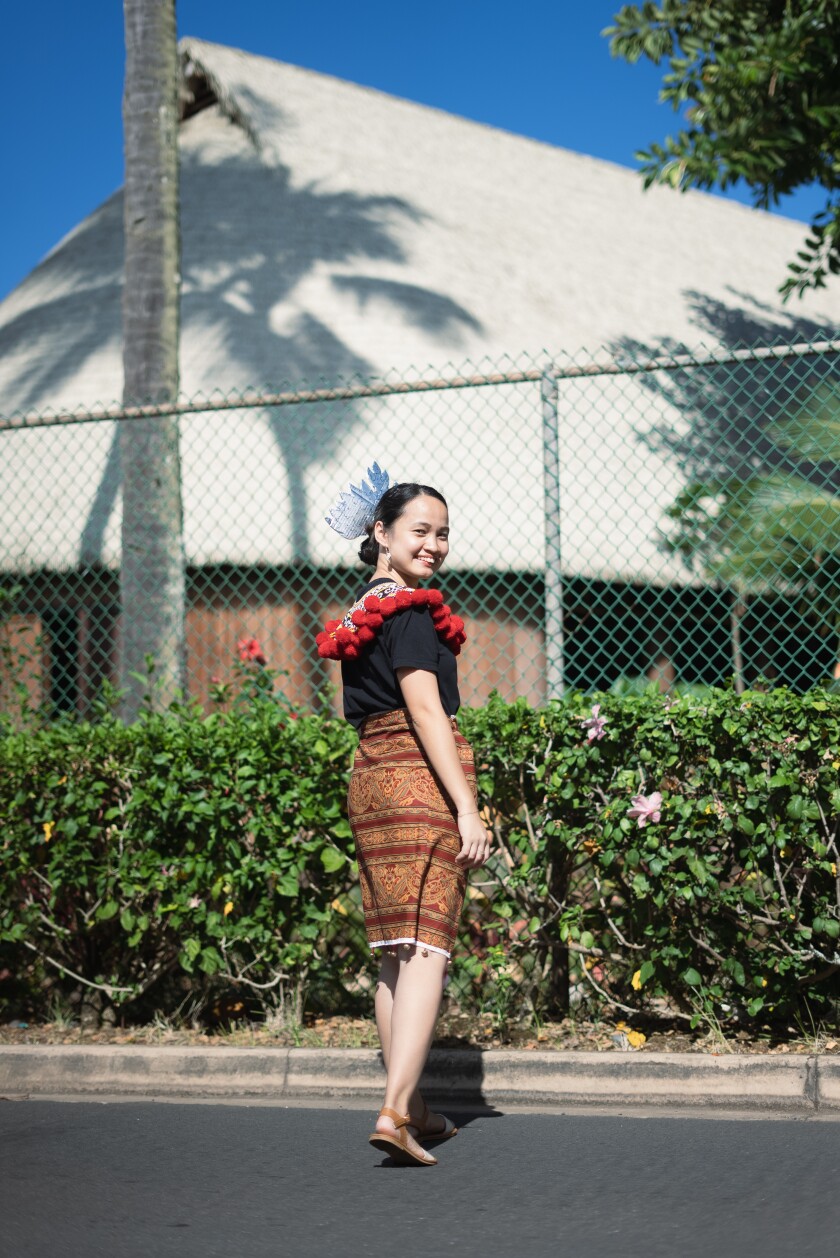BYUH students share their connection with their families through their most important pieces of clothing and jewelry

People can have a deep connection with certain pieces of clothing and jewelry, and BYU–Hawaii students said they are no exception. Despite being far from home, three students discussed how they express their identity through traditional fashion that is special to them. Kenneth Dadson, a sophomore majoring in information technology from Ghana, explained, “The fact that I get to represent my country and my culture [through my clothing] makes me stand out not only in Hawaii but also in BYUH.”
A handmade kente
Dadson said his tribe, the Akan tribe in West Africa, has their own cloth material that is called “kente.” It comes in many colors, textures and designs, Dadson said. “African fashion is all about adding different colors and fusing patterns to different designs. [Then] you’re good to go wherever you go.”
Dadson said kente is only worn on important occasions such as weddings and is primarily worn by the bride and groom. He added, “The traditional way to wear it is with gold jewelry, beaded bracelets and matching sandals.”
There is significant meaning behind wearing kente, said Dadson. “This kente is handmade by my mom. When someone makes kente for you, it means you are very special to them and you have a part of them in you,” Dadson said.

A cherished tanguk
Pamela Chiping, a sophomore from Malaysia majoring in business management, shared about her piece of jewelry called a “tanguk,” which has been passed down through the generations of her tribe. Chiping is part of the Iban people of indigenous to the state of Sarawak in East Malaysia. She said the tanguk, which is a beaded, hand-sewn necklace, reminds her of her tribe.
“Whenever I miss my family and my culture, I will look at it and think about how grateful I am to be Iban,” shared Chiping. She said people wear it to give things to the gods. In the olden days they used it as clothing to cover up their body, said Chiping. But nowadays, she said they use it on a special occasion like during the paddy festival or during Gawai Dayak, which is a festival celebrated by everyone in Sarawak.
Chiping said the tanguk is expensive and takes months to design as it has a lot of beadwork. “My tanguk is really special. It is sent down to the daughters from generation to generation, and I hope to give this to my future daughter someday,” said Chiping.

A symbolic mangalsutra
Chhaya Yadav, a sophomore from India majoring in social work, spoke about the significance of her mangalsutra, a necklace traditionally worn by married women in India. She explained wearing a mangalsutra signifies a woman is married and that her husband is alive, representing a desire for his long life. “It is seen as a way to express love for one’s husband and to convey this commitment to society. In my culture it’s important to wear it at all times even when sick or sad,” said Yadav.
She said there are other traditional jewelry and attire customs in her culture, such as wearing bangles, bindis and sarees after marriage. These items hold cultural significance and are considered essential to represent a married woman, she said.
Yadav said she values her cultural traditions and even had her family shop for traditional attire for her wedding in India despite the fact that she was married in Hawaii. “Everything my family sent me from India for my wedding is precious and valuable. My lehenga, which is my traditional wedding attire, and my jewelry are close to my heart.”
Yadav said her dreams and expectations for her wedding were inspired by movies and weddings she attended as a child and teenager. She said she was grateful for the unique experience she had including the exchange of garlands with her husband and playful interactions with friends during the wedding ceremony.
She said,“It was really hard not having my family around for my wedding. It felt incomplete without them, but with all the traditional attire and jewelry they sent me, I felt a huge part of them was with me on my wedding day and that was enough.”
